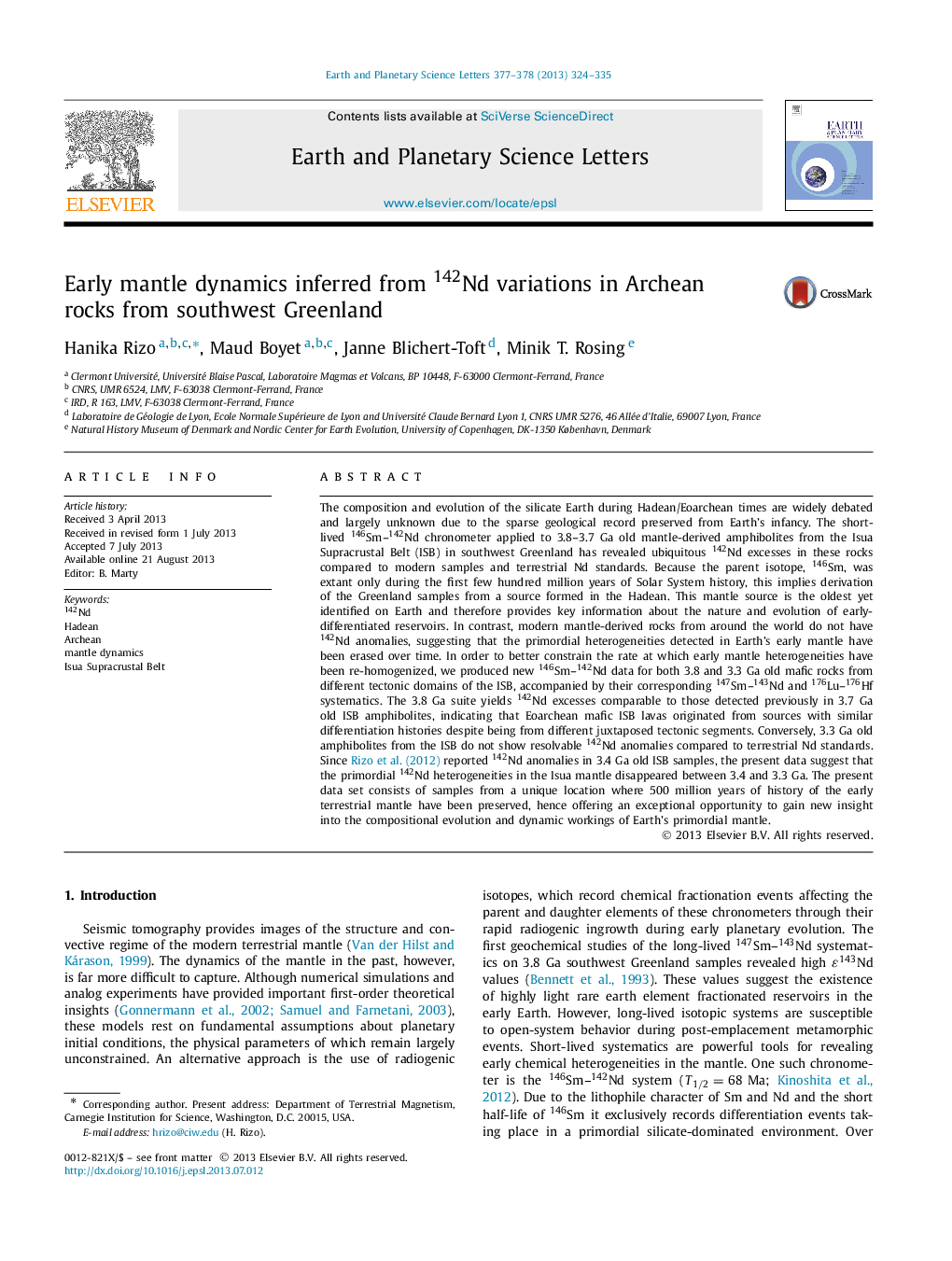| Article ID | Journal | Published Year | Pages | File Type |
|---|---|---|---|---|
| 6430038 | Earth and Planetary Science Letters | 2013 | 12 Pages |
â¢146,147Sm-142,143Nd and 176Lu-176Hf data for 3.8 and 3.3 Ga SW Greenland metabasalts.â¢3.8 Ga rocks yield 142Nd excesses similar to other Eoarchean SW Greenland lithologies.â¢142Nd excesses imply the formation of SW Greenland rock source during the Hadean.â¢The early-differentiated source supplied at least four distinct SW Greenland terranes.â¢Non-radiogenic 142Nd signatures in 3.3 Ga metabasalts imply remixing of early-formed reservoirs by 3.3 Ga.
The composition and evolution of the silicate Earth during Hadean/Eoarchean times are widely debated and largely unknown due to the sparse geological record preserved from Earthʼs infancy. The short-lived 146Sm-142Nd chronometer applied to 3.8-3.7 Ga old mantle-derived amphibolites from the Isua Supracrustal Belt (ISB) in southwest Greenland has revealed ubiquitous 142Nd excesses in these rocks compared to modern samples and terrestrial Nd standards. Because the parent isotope, 146Sm, was extant only during the first few hundred million years of Solar System history, this implies derivation of the Greenland samples from a source formed in the Hadean. This mantle source is the oldest yet identified on Earth and therefore provides key information about the nature and evolution of early-differentiated reservoirs. In contrast, modern mantle-derived rocks from around the world do not have 142Nd anomalies, suggesting that the primordial heterogeneities detected in Earthʼs early mantle have been erased over time. In order to better constrain the rate at which early mantle heterogeneities have been re-homogenized, we produced new 146Sm-142Nd data for both 3.8 and 3.3 Ga old mafic rocks from different tectonic domains of the ISB, accompanied by their corresponding 147Sm-143Nd and 176Lu-176Hf systematics. The 3.8 Ga suite yields 142Nd excesses comparable to those detected previously in 3.7 Ga old ISB amphibolites, indicating that Eoarchean mafic ISB lavas originated from sources with similar differentiation histories despite being from different juxtaposed tectonic segments. Conversely, 3.3 Ga old amphibolites from the ISB do not show resolvable 142Nd anomalies compared to terrestrial Nd standards. Since Rizo et al. (2012) reported 142Nd anomalies in 3.4 Ga old ISB samples, the present data suggest that the primordial 142Nd heterogeneities in the Isua mantle disappeared between 3.4 and 3.3 Ga. The present data set consists of samples from a unique location where 500 million years of history of the early terrestrial mantle have been preserved, hence offering an exceptional opportunity to gain new insight into the compositional evolution and dynamic workings of Earthʼs primordial mantle.
